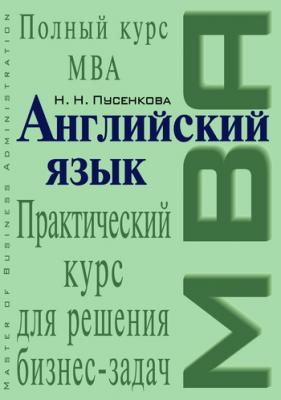Английский язык. Практический курс для решения бизнес-задач. Нина Пусенкова
Читать онлайн.| Название | Английский язык. Практический курс для решения бизнес-задач |
|---|---|
| Автор произведения | Нина Пусенкова |
| Жанр | Иностранные языки |
| Серия | |
| Издательство | Иностранные языки |
| Год выпуска | 2008 |
| isbn | 978-5-699-29820-4 |
net out v – вычитать, определять нетто-позицию, взаимозачитывать
10. return on assets (ROA) – доходность активов
11. service v debt – обслуживать долг
12. dividend (div) n – дивиденд
13. shareholder n – акционер
14. cash flow – денежный поток
15. present value – приведенная ценность
16. discounted cash flow (DCF) – дисконтированный денежный поток
17. allocation n – распределение, назначение; ассигнование; размещение
allocate v– распределять, назначать; ассигновать; размещать
18. one-size-fits-all – единый для всех, общий
19. generic a – родовой, общий, характерный для определенного рода или группы
20. fund n – фонд, финансовое средство, сумма денег
fund v – финансировать
21. strategic business unit (SBU) – стратегическая бизнес-единица
22. parent company – материнская компания
23. return n – возврат; доходность; налоговая декларация
24. entry barrier – барьер на выход в отрасль или на рынок
25. competency n – компетентность, умение, способность; компетенция
26. access n – доступ
access v – иметь доступ
accessible a – доступный
27. score n – счет, задолженность, долг; причина, основание; количество набранных очков; удача; истинные факты
score v – подсчитывать очки, вести счет; выигрывать, получать преимущество
28. sensitivity analysis – анализ чувствительности
29. core competency – основная сфера компетенции
Exercise 1. Answer the following questions.
1. What kind of product portfolio should a company have to ensure long-term value creation? 2. How can business units be categorized? 3. What are the characteristics of the Dog Business Units? 4. What is the potential future of Question Marks? 5. What are the specifics of Stars? 6. What is the function of Cash Cows in a company? 7. Why is it unadvisable to have a one-size-fits-all approach to strategy? 8. What are the limitations of the BCG matrix? 9. What is the basis of the GE/McKinsey matrix? 10. What is the aim of the portfolio analysis? 11. Why is the GE/McKinsey matrix more sophisticated than the BCG matrix? 12. What are the external factors that affect market attractiveness? 13. What are the internal factors that affect competitive strength? 14. What approach can be used to implement the portfolio analysis? 15. What are the limitations of the GE/McKinsey matrix?
Exercise 2. Analyze your own company using the BCG Matrix and the GE/McKinsey Matrix.
Exercise 3*. Fill in the blanks using terms given below.
Core Competence
The Core Competence model of Hamel and Prahalad is a……… model that starts the strategy process by thinking about the…….. strengths of an organization.
The Core Competence model states that in the long run competitiveness derives from an ability to build a…………, at…….. and more speedily than competitors. The real sources of advantage are to be found in management’s abilities to……… corporate-wide technologies and production skills into competencies, through which individual businesses can……. quickly to changing circumstances. A Core Competence can be any combination of specific, inherent, integrated and applied knowledge……. and attitudes.
Prahalad and Hamel dismiss the……….. perspective as a viable approach to corporate strategy. In their view, the……….. of the Strategic Business Unit is now clearly an anachronism. Hamel and Prahalad argue that a….. should be built around a core of shared competencies.
……….. must use and help to further develop the CCs. The corporate center should not be just another layer of accounting, but must……… by improving the strategic architecture that guides the process of……….
Three tests for identifying a Сore Сompetence
Provides potential……. to a wide variety of markets.
Makes a significant contribution to the benefits of the products as…….. by the customer.
A CC should be difficult for……… to imitate.
Building a Core Competence
A Core Competence is built through a process of continuous improvement and……… It should constitute the…….. for corporate strategy. At this level, the goal is to build………. in the design and development of a particular class of product functionality.
Once top management with the help of SBUs managers have………. an all-embracing Core Competence, it must ask businesses to find the projects and the people that are closely connected with it. Corporate auditors should……. an audit of the location, number and quality of the people related to the CC. CC carriers should be brought together frequently to…… ideas.
Source: www.valuebasedmanagement.com
Terms:
adapt, identified, focus, share, competitors, enhancement, corporate strategy, world leadership, primacy, perform, access, competence building, core, skills, portfolio, core competence, consolidate, business units, add value, perceived, lower cost, corporation
Exercise 4. Make 2 sentences with each term.
core – non-core:
– competence,
– assets,
– activities,
– business.
Exercise
